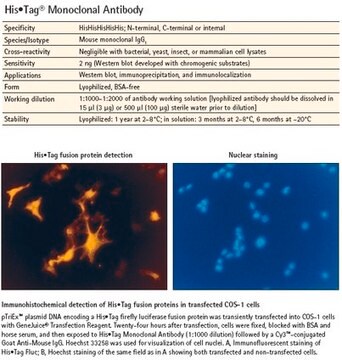SCC069
HSC-T6 Rat Hepatic Stellate Cell Line
Rat
Synonym(s):
HSC, Perisinusoidal cells, Ito cells, Hepatic lipocytes, Hepatic pericytes
About This Item
Recommended Products
product name
HSC-T6 Rat Hepatic Stellate Cell Line, The HSC-T6 rat hepatic stellate cell line is a valuable cell model for studies of retinoid metabolism based on their similar retinoid phenotype as primary cells.
biological source
rat
Quality Level
technique(s)
cell based assay: suitable
cell culture | mammalian: suitable
shipped in
ambient
Related Categories
General description
Cell Line Description
Application
Metabolism
Infectious Diseases
Inflammation & Immunology
Stem Cell Research
Liver Physiology
Components
Quality
• Cells tested negative for infectious diseases by a Mouse/Rat Comprehensive CLEAR panel PCR panel by Charles River Animal Diagnostic Services.
• Cells tested negative for mycoplasma contamination.
Storage and Stability
Storage Class Code
10 - Combustible liquids
WGK
WGK 3
Flash Point(F)
Not applicable
Flash Point(C)
Not applicable
Certificates of Analysis (COA)
Search for Certificates of Analysis (COA) by entering the products Lot/Batch Number. Lot and Batch Numbers can be found on a product’s label following the words ‘Lot’ or ‘Batch’.
Already Own This Product?
Find documentation for the products that you have recently purchased in the Document Library.
Our team of scientists has experience in all areas of research including Life Science, Material Science, Chemical Synthesis, Chromatography, Analytical and many others.
Contact Technical Service







